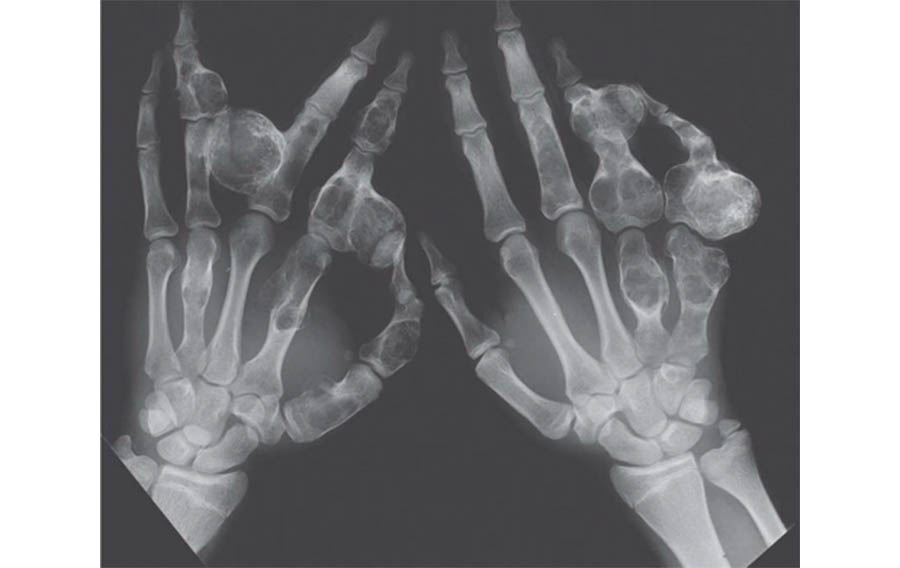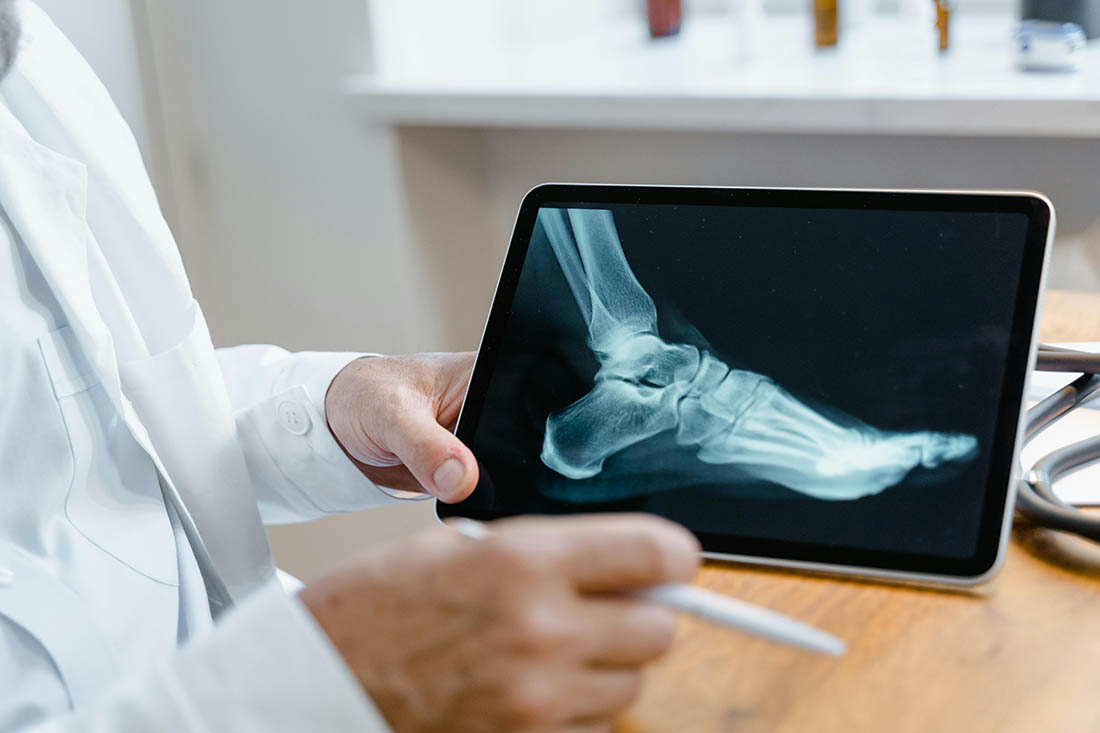Calls for Ukraine
Calls for Europe
Calls for USA

Chondroma is a benign neoplasm that develops from cartilaginous tissue. Such tumors are predominantly diagnosed in children and adolescents. Among benign bone tumors, chondromas account for about 10%. Chondromas are typically slow growing and non-aggressive. However, they can sometimes grow to very large sizes, compress surrounding tissues, and, in rare cases, even become malignant. Therefore, it is important to diagnose and treat chondroma as early as possible.
MedTour will help you choose a clinic where chondroma treatment is conducted using the most advanced protocols. With extensive experience in medical tourism, we provide you with access to the best medical centers in the world and the latest treatment methods.
Chondroma is a tumor that can develop in various parts of the body where cartilage is present. Cartilage is a type of connective tissue that is fairly hard but elastic. It forms a flexible framework for many parts of our body, including joints and airways. What is chondroma? Chondroma is a neoplasm that is formed from the cells of connective tissue. A growth of this type can be solitary or multiple.
Chondromas most often occur in the tubular bones (such as the small bones of the fingers and toes), but can also develop in other bones. In rare cases, neoplasms can arise in other organs, such as the lungs (pulmonary chondroma), throat, or ear (ear chondroma).
The exact causes of chondroma development have not yet been fully clarified. However, it is believed that genetic mutations may play a role. In addition, factors such as intrauterine developmental abnormalities, inflammatory processes affecting bone tissue, and injuries may contribute to their formation.
There are several types of chondromas:

The tumor may not cause any symptoms for a long time. However, as the chondroma grows, certain symptoms may appear. For chondromas located in the bones and joints of the limbs, the following signs are common:
If the bones of the feet or hands are affected, a visible lump or a bone grows on the foot or arm may appear. When the tumor is located at the base of the skull, symptoms such as dizziness, fainting, headaches, and vestibular issues may be observed. If the neoplasm is localized in the nasal sinuses, it may cause headaches, nasal pain, and breathing difficulties. Ear chondroma can lead to hearing loss and visible changes in the appearance of the ear. Pulmonary chondroma results in symptoms like coughing or shortness of breath.

If chondroma is suspected, a comprehensive examination is carried out to make an accurate diagnosis, which usually includes:
Once a diagnosis of chondroma is confirmed, treatment is selected individually. Treatment strategies vary depending on the tumor’s location and stage. Leading medical centers offer a personalized approach to managing this condition.
To learn more about diagnostic and treatment options available in various clinics worldwide, sign up for a free consultation with a MedTour medical coordinator.
For benign bone tumors, surgery is the primary treatment method. The goal of surgical intervention is to completely remove the tumor to prevent its growth and complications. In rare cases, chemotherapy and radiation therapy may be used. The choice of treatment method depends on the tumor’s location, size, the patient’s overall health, and age.
Surgical treatment may include the following methods:
During operations involving the removal of a bone or its fragment, additional bone grafting may also be performed to restore the removed segment.
Timely surgery allows most patients to fully recover from chondroma. While there is a risk of recurrence in some cases, seeking treatment at clinics with high standards of medical care minimizes the chances of such complications.

Pulmonary chondroma is a rare condition. It usually grows slowly and often does not cause symptoms. However, surgery is typically recommended if the tumor is detected.
Surgical treatment for pulmonary chondroma can be performed using various techniques. A lobe of the lung or a part of the lobe containing the tumor may be removed. A modern method used for treating pulmonary chondroma is video-assisted thoracoscopic surgery (VATS). This minimally invasive technique involves performing the surgery through small incisions using specialized instruments, making it less traumatic compared to traditional approaches.
Ear chondroma is also a rare disease. It usually develops from the cartilage tissue of the auricle. Treatment of ear chondroma is also predominantly surgical. During the operation, the tumor is completely removed. However, such procedures may alter the appearance of the ear, leading to aesthetic concerns. To correct this issue, ear plastic surgery may be required.
MedTour will help you find a clinic that successfully treats such rare forms of pathology. Our MedTour coordinating physician will provide you with detailed information about treatment options during a free consultation.
Chondrosarcoma is a malignant condition that also develops from cartilage tissue cells, but is classified as a sarcoma. This type of tumor is highly aggressive, can grow into nearby tissues and cause distant metastases. It often occurs in tubular bones, making it difficult to distinguish from chondroma in its early stages. Chondrosarcoma can develop independently, but in some cases it appears as a result of the degeneration of a chondroma. For example, pulmonary chondroma can transform into mesenchymal chondrosarcoma of the lung without timely treatment.
The primary treatment for chondrosarcoma is surgical removal. However, advanced therapies such as IMRT radiation therapy, CyberKnife radiosurgery, chemotherapy, and targeted therapy may also be used.
Despite the aggressive nature of this disease, timely diagnosis and well-planned treatment can result in favorable outcomes. Successful treatment depends on seeking care from skilled physicians at reputable clinics with extensive experience managing such diseases.
MedTour will help you choose the best medical center in the country where you want to seek medical care. We collaborate with top clinics worldwide. For example, you can choose such world-famous clinics as Memorial (Turkey), Teknon (Spain), Samsung (South Korea), Fortis (India). You can find general information about these clinics on our website. General information about these clinics is available on our website. For detailed information about treatment options, clinics, and costs, contact a MedTour medical coordinator.
Rehabilitation is often required after chondroma treatment to promote recovery following surgery and other procedures. The complex of rehabilitation measures is tailored individually depending on the tumor’s location, the scope of surgery and the general condition of the patient. Rehabilitation programs may include physiotherapy, exercise therapy, and medication. You can also undergo rehabilitation in specialized medical centers, information about which you can get on the MedTour platform.
There are no specific preventive measures for this type of pathology. However, maintaining a healthy lifestyle and undergoing regular check-ups can help reduce the risk of recurrence. If you need assistance selecting a clinic for a preventive health check-up or specialized diagnostics, contact a MedTour medical coordinator.
Please rate the work of MedTour
